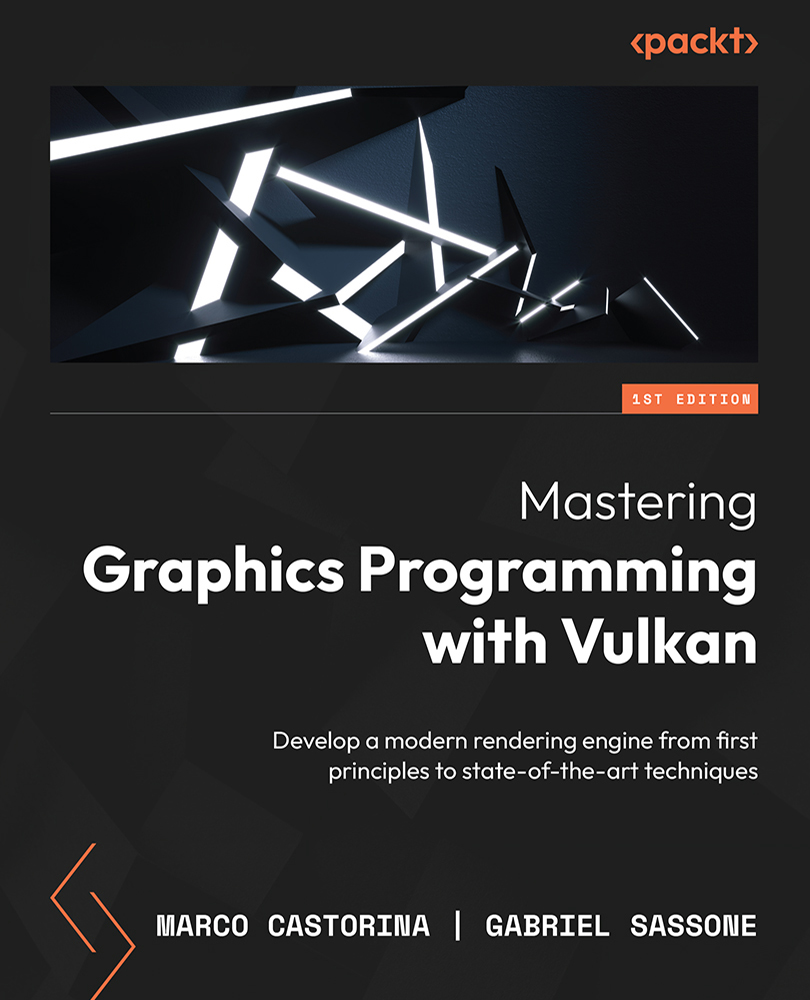Overview of this book
Vulkan is now an established and flexible multi-platform graphics API. It has been adopted in many industries, including game development, medical imaging, movie productions, and media playback but learning it can be a daunting challenge due to its low-level, complex nature. Mastering Graphics Programming with Vulkan is designed to help you overcome this difficulty, providing a practical approach to learning one of the most advanced graphics APIs.
In Mastering Graphics Programming with Vulkan, you’ll focus on building a high-performance rendering engine from the ground up. You’ll explore Vulkan’s advanced features, such as pipeline layouts, resource barriers, and GPU-driven rendering, to automate tedious tasks and create efficient workflows. Additionally, you'll delve into cutting-edge techniques like mesh shaders and real-time ray tracing, elevating your graphics programming to the next level.
By the end of this book, you’ll have a thorough understanding of modern rendering engines to confidently handle large-scale projects. Whether you're developing games, simulations, or visual effects, this guide will equip you with the skills and knowledge to harness Vulkan’s full potential.



 Free Chapter
Free Chapter

